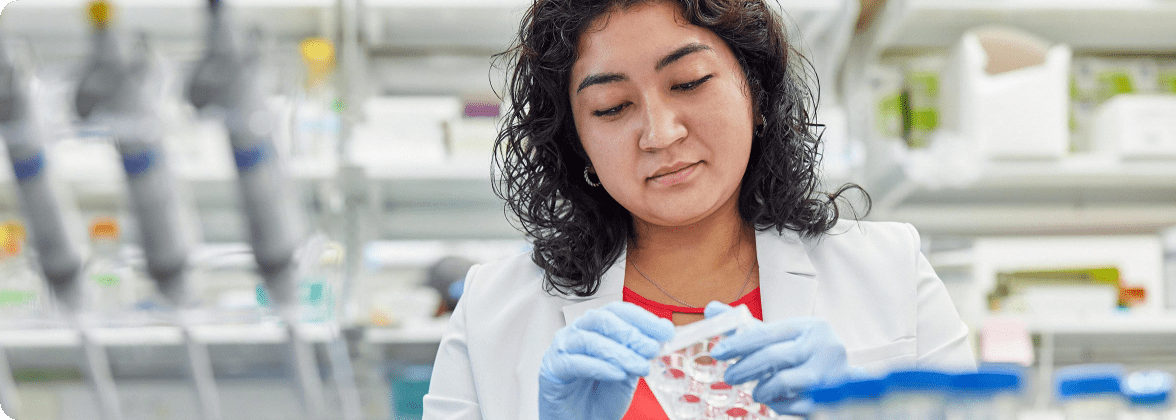The Green Family
Smiling in the Face of Adversity

Thirteen-year-old Nicholas Green has a smile that can charm most anyone. Ironically, it was his perpetually cheerful nature that unlocked the mystery behind his severe seizures, stilted gait, and inability to speak. Nicholas has Angelman syndrome, a neurological disease often mistaken for cerebral palsy or autism. But the clue for Angelman is that patients exhibit a happy demeanor.
"He's a lot of fun," says his mom. "He has a 10-year-old sister, and they're best friends — most of the time. He likes playing on the playground, swimming, and playing in water... he's a boy just like any other boy." But a boy who, early on, faced an extra set of challenges.
A Puzzling Set of Symptoms
Angelman syndrome, a genetic disease caused by missing or faulty genes, is quite uncommon. In its early phases, the symptoms are subtle and easily missed, and even the full manifestations are not always apparent — making it difficult to diagnose initially.
Signs that Nicholas had a problem first appeared around six months, when he didn't sit up or try to pull himself up like most babies. His pediatrician kept a close watch on him, and shortly after Nicholas turned a year old, he was referred to developmental pediatricians at Baylor College of Medicine's Kleberg Genetics Clinic and Texas Children's Meyer Center for Developmental Pediatrics. Various doctors leaned toward a diagnosis of cerebral palsy, but weren't completely convinced.
A Difficult Diagnosis
Three days before his second birthday, Nicholas started having seizures and was admitted to Texas Children's Hospital. "They did spinal taps and blood work and still didn't know for sure what he had," recalls his mother, Jan. "One of the physicians noticed that Nicholas was always happy. He put two and two together to come up with a guess pointing to Angelman syndrome. He sent us back to the Kleberg Clinic for specific testing, and that's when it was confirmed. It helped to get a diagnosis — even though the diagnosis is not a pretty one."
Angelman syndrome is caused by missing or faulty genes on chromosome 15, resulting in a variety of symptoms. In addition to seizures, patients typically have varying degrees of intellectual impairment, little-to-no language development, and other difficulties. The condition is not reversible, and there are currently no treatments; therapies focus on controlling the seizures, improving motor skills, and establishing alternative forms of communication through sign language or technological means. Yet the cheerful natures of Angelman patients help families like the Greens face their challenges.
Exploring the Root Cause
While today there is no way to prevent or cure Angelman syndrome, the Jan and Dan Duncan Neurological Research Institute at Texas Children's Hospital hopes to open the door to new possibilities tomorrow for children like Nicholas. A combination of research science and clinical efforts supported by world-class infrastructure will allow researchers to study Angelman syndrome and other pediatric neurological diseases on a fundamental level.
For example, investigators like Dr. Arthur Beaudet, chief of Genetics at Texas Children's and professor and chair of Molecular and Human Genetics at Baylor, are exploring several approaches to better understand the mechanism behind Angelman syndrome, which is the result of genomic imprinting — when only one gene functions in the pair of genes inherited from both parents.
In Angelman patients, the gene inherited from the father is deactivated in all nerve cells, making those cells entirely dependent on the gene from the mother — and resulting in various neurological problems. Using human culture cells as well as mice, Beaudet, a world expert on molecular genetics and Angelman syndrome, and his colleagues are trying to find a way to "reactivate" the father's gene as a unique form of treatment for the condition. "We believe it's highly likely that studying some of these rare disorders — like Angelman syndrome and Rett syndrome — is likely to lead to a much better understanding of more common disorders, like autism," Beaudet said.
Still other genetic researchers have developed a new form of prenatal diagnosis that detects the most common form of Angelman syndrome — allowing for earlier intervention and better long-term prospects in cases like Nicholas Green's.
Inspired by Nicholas's story? Make a donation now.


